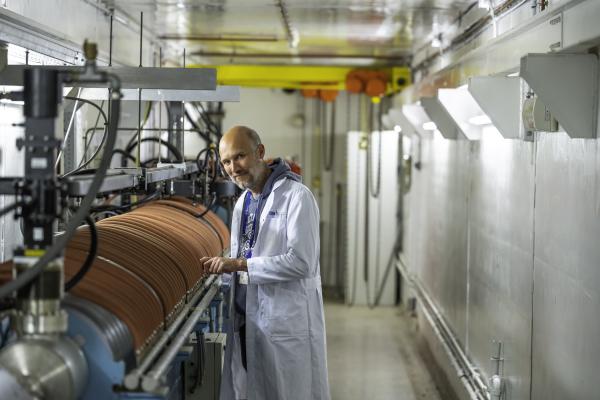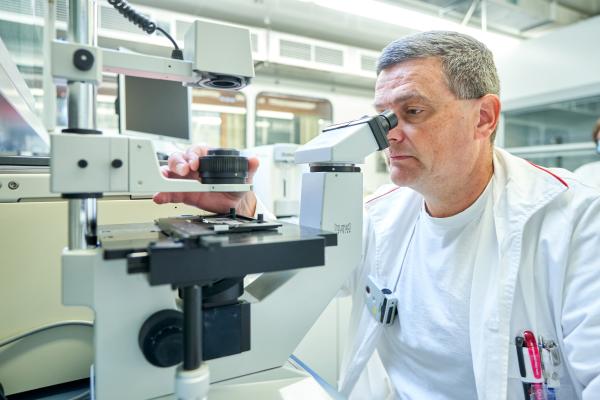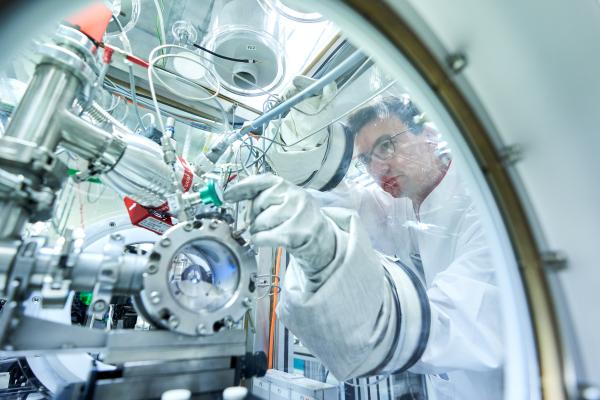
A recent publication by Joint Research Centre (JRC) and NASA scientists finds that a traditional technique to study the behaviour of materials at very high temperatures is still highly relevant today, and will continue to have important applications in scientific work that supports EU goals on climate action.
Knudsen Effusion Mass Spectrometry (KEMS) is a technique used in materials research laboratories to study how materials behave at high temperatures when they start to vaporise.
It was developed in the 1950s and 60s, coinciding with the beginning of research on nuclear materials. KEMs is used to study the behaviour of materials in the nuclear field, but also in other fields such as space, geology and metallurgy. The JRC site in Karlsruhe has been using KEMS since the establishment of the site in 1963.
How does Knudsen Effusion Mass Spectrometry work?
KEMS measures a property called 'vapour pressure', which is the tendency of a substance to evaporate or vaporise.
It works by heating a small, closed cell containing a sample of the material in a vacuum furnace. When the temperature rises high enough, the sample vaporises, causing the pressure within the cell to increase. A small hole in the cell allows some vapour to escape, which is then measured by a ‘mass spectrometer’. This device measures the intensity of the escaping vapour, allowing scientists to determine the vapour pressure.
This pressure, the ‘vapour pressure at equilibrium’, is the fundamental property of the material that researchers are looking for.
KEMS’ contribution to nuclear design and safety
Since its development, the KEMS technique has become an indispensable pillar for understanding nuclear materials. JRC KEMS data are used as inputs to computer models by commercial power plants worldwide.
Data on the evaporation of nuclear fuel provide insights that are essential for nuclear safety assessments and reactor design. JRC Karlsruhe has advanced KEMS to study the behaviour of the by-products of the nuclear fission process taking place in a nuclear reactor (‘fission products’) under accident conditions. Data on how nuclear fission products behave in normal and accidental conditions inform safety protocols and reactor performance.
Of the ten active research groups using KEMS worldwide, only two are able to work with nuclear fuels and only JRC Karlsruhe with irradiated fuel. This unique capability and years of expertise position the JRC today among the top KEMS research groups globally.
Results from JRC KEMS were of key importance in evaluating the release of fission products in the wake of the nuclear plant accidents at Fukushima and Chernobyl.
Contributing to the EU’s green ambitions
KEMS data from the JRC are also used by researchers to design novel fuels for burning nuclear waste. These innovative fuel compositions aim to enhance waste management.
A promising solution to the provision of low-carbon electricity is the development of Small Modular Reactors (SMRs). These small nuclear reactors use nuclear fission to generate heat which can generate electricity. They can use a range of coolants including light water, liquid metal or molten salt. JRC KEMs data has already been used to demonstrate fuel performance in molten salt fuel licensing for SMRs. The data inform regulatory decisions and ensure safe operation.
Related links
Fuels and Materials Research Laboratory
Knudsen effusion mass spectrometry: Current and future approaches (May 2024)
Details
- Publication date
- 6 September 2024
- Author
- Joint Research Centre
- JRC portfolios




